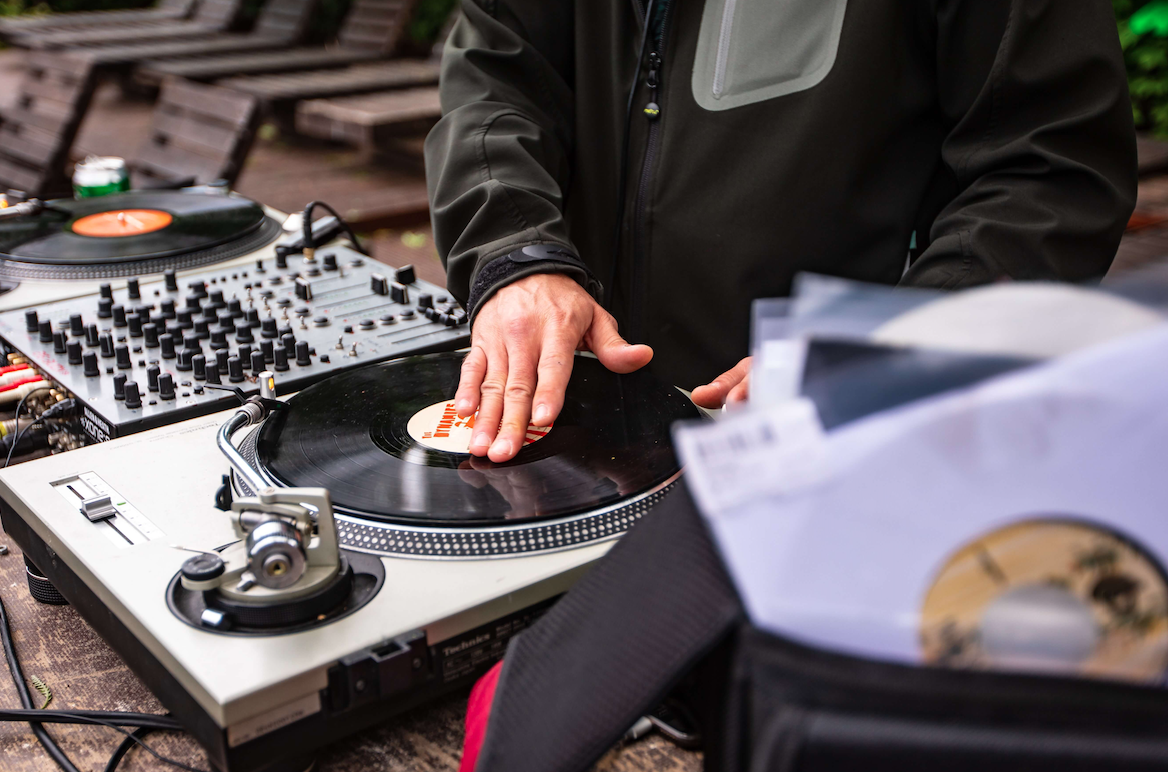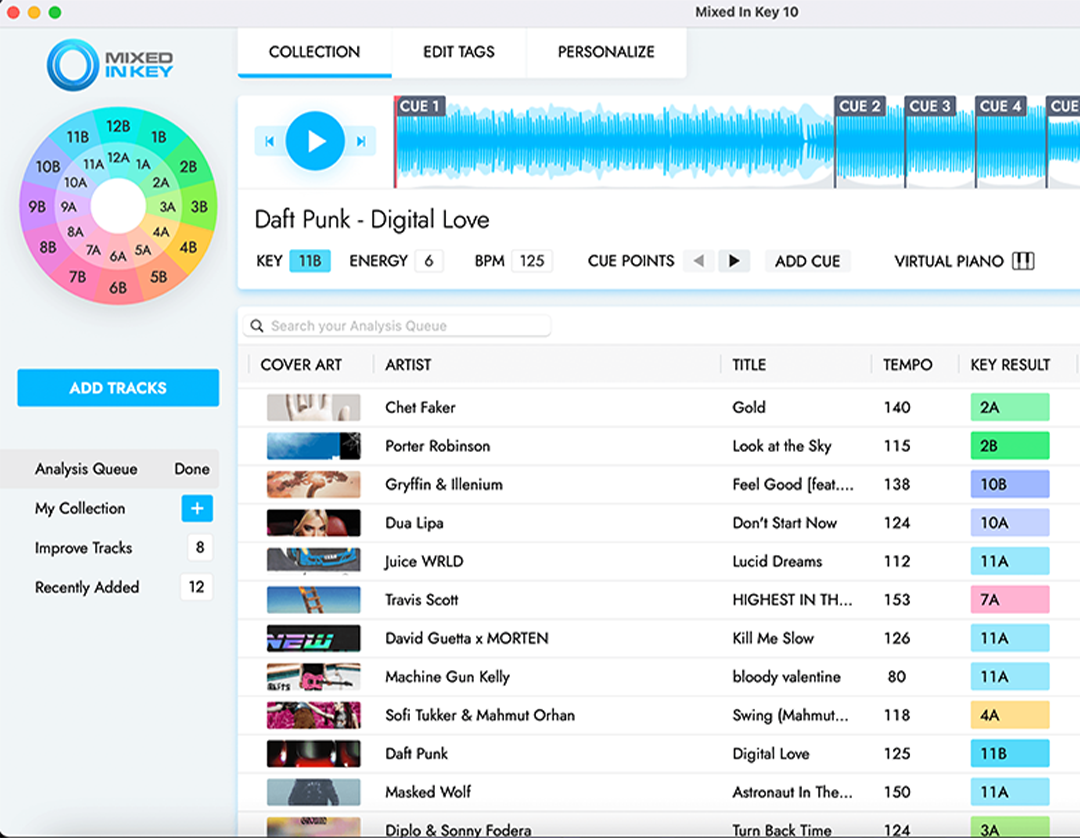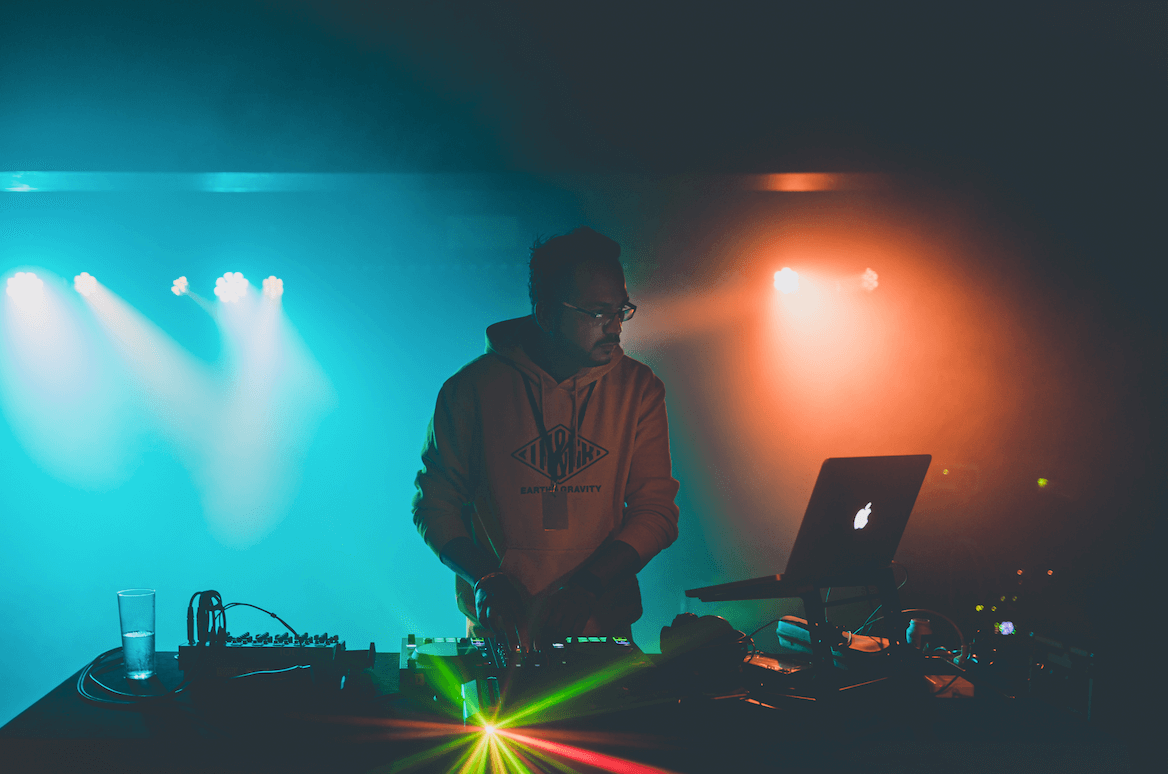The Art of DJing: Practice makes perfect.

Tech, tracks and tweets. But what about the technique? It’s easy to get distracted from the fundamental art of DJing, with so much noise about what you should be using, playing, posting and wearing. Of course, all these things are important if you want to be taken seriously as a DJ. But the top DJs in any scene are where they are because they’re good enough to be. If you want to be a good DJ, don’t skimp on practice. Here are a few tips to try out at home.
1. Practice planning a set.

DJing is all about taking your audience on a journey. Whether playing main stage, warm-up or bar-room, even livestreaming, your DJ set soundtracks the room. That’s quite a responsibility, and also a real privilege!
A DJ set is like a train journey, and you’re the driver.
All good train journeys need a start, and end, and an exciting middle. What will your audience experience during these moments? Of course, the exact nature of the journey you take your audience on is dependent on genre, environment and vibe, but the one thing no DJ wants is people getting off the train early.
Planning a set is super important, just like planning a train route. In many cases, you’ll want to remain open to changing things up in the moment, but a plan is still best practice for every set. In a section of Frank Broughton & Bill Brewster’s book ‘How to DJ Properly’, Mr Scruff describes planning his marathon sets from start to finish. However, revealingly, he likes to have three options for each new track, so he can respond to the mood of the audience. He has a plan, but doesn’t stick to it too rigidly.
So how do you plan a set effectively, then?
When ‘How to DJ properly’ was written, DJing was all on CDJs or vinyl turntables. Nowadays, most DJs use digital DJ software or CDJs. This helps with planning a set, thanks to the superior file management of computers. We can easily create playlists and swap tunes in and out in seconds. What’s more, with Mixed In Key 10 you can even access deep metadata about every track in your collecion. You’ll know the exact key of every song, which makes planning a harmonically compatible set much easier. You’ll also know the Energy Level of yur music, which enables you to sort your playlists by Energy Level, as descibed here. Combining Key, Energy Level and BPM gives you the edge when it comes to planning a set. You can start mellow, and harmonically plot your way through the different energies you want to impress upon your audience throughout the journey. And, of course, you can remain harmonically compatible the whole time.
Key-clashes clear dancefloors.
One fundamental reason to use Mixed In Key 10 is the accuracy of its key detection. Better accuracy means better mixing, and fewer mistakes. Any DJ knows that key-clash mixes usually clear the floor. They’re uncomofrtable to listen to and that’s enough to knock everyone off their moves. Getting a dancefloor going is like snake-charming – it takes concentration, skill and time to develop a dancefloor, and one poor mix to clear it!
2. Learn your strengths and weaknesses

Practice the kind of mixing you want to perfect. Then be realistic – where are your strengths, and where are your weaknesses? We’ve all got them. Some of us have nimble fingers and ample dexterity – super-fast routines might be a little easier to learn. Others excel at longer blends. For some, simply learning to maintain concentration for the duration of a DJ set is aided by practice. Whatever your natural strengths, constantly appraise your bedroom DJing and focus on improving areas you wish to improve.
3. Practice a few ‘fallback’ routines.

One thing every professional DJ can relate to is that moment when the carefully planned set falls flat. It can be for a myriad of reasons. Maybe the DJ before you was exceptional, or played all the same songs. Or maybe they were terrible, and everyone left the venue. Or perhaps the audience just aren’t feeling the genre you’re playing. Whatever the reason, it’s a great idea to have some ‘fallback’ routines up your sleeve. Mixes that please the crowd, can get you out of a hole and put a smile on everyone’s face. Even if you’re determined to continue in the same vein regardless of crowd reaction, at least use this moment to whip out your A-game.
4. Practice opening and closing a set.

You step up to the booth. Your adrenaline is pumping. You’re excited, maybe a little nervous. You’ve got to switch out the current DJ’s gear for yours, usually while they’re still using it. Punters are shouting requests at you already. Where’s your headphone jack? Will the current DJ finish on the left or right deck? Will they play something you can mix into, or do you need to change the pace? Starting a DJ set can be intense, and you may find your mind spinning.
Have a solid opening gambit that you know inside out. That way, you can deal with all the other distractions and keep your DJing on point.
Similarly, how you close your set is important, too. The next DJ is unlikely to want to give you a second over your alloted time, so make sure you’re peaking about a minute before the end of your set. Start your closing section at least 20 minutes before the end of your set, and make sure it’s all killer, no filler. That way, you look great, the crowd love you, and it’s up to the next DJ to step up. Audiences tend to remember the beginning and end of a DJ’s set above most other things. If you run out of steam and end with poor song selection you’ll make it harder to stick in people’s minds. If you end with a technically brilliant DJing masterclass, you’ll be the talk of the night.
5. Record your practice sets to get used to the pressure.

Bedroom DJing is low pressure. Playing gigs is the opposite. But, to get more gigs, you’ll need some kick-ass mixtapes. And that means recording your mixes.
This may not affect everyone, but I certainly find that pressing that red record button plays havoc on my DJing ability. Things that were effortless a moment ago are suddenly a little sketchy, and it starts to feel like playing a gig to an empty room. Record yourself everytime you mix, though, and soon you’ll barely notice the red light when recording a fully rehearsed mixtape. It works for me!
Get Mixed In Key 10 today.
Improve your DJ Mixing by adding up to 8 automatic Cue Points per track. Mixed In Key 10 also gives you industry-standard key detection, rates your tracks by Energy Level, and offers a comprehensive metadata management system. Unlock the secret of the pros.
About the author:
